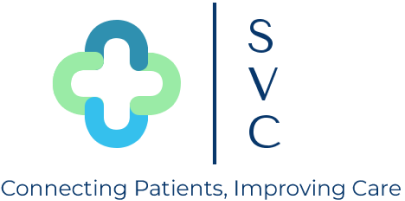In recent years, the healthcare industry has undergone a seismic shift, driven by advancements in technology and the growing demand for accessible, convenient care. At the forefront of this transformation is telemedicine, a revolutionary approach that brings healthcare services directly to patients through digital platforms. No longer confined to the walls of a clinic or hospital, healthcare is now just a click away. But what exactly is telemedicine, and why is it being hailed as the future of healthcare? Let’s dive in.
What is Telemedicine?
Telemedicine refers to the use of digital communication tools—such as video calls, mobile apps, and messaging platforms—to provide remote medical care. Whether it’s a virtual consultation with a doctor, remote monitoring of chronic conditions, or even mental health therapy sessions, telemedicine bridges the gap between patients and healthcare providers, making care more accessible than ever before. From rural areas with limited access to specialists to busy urban professionals who struggle to find time for in-person visits, telemedicine is breaking down barriers and redefining how we think about healthcare delivery.
Why Telemedicine is the Future of Healthcare
1. Convenience and Accessibility
One of the most significant advantages of telemedicine is its convenience. Patients no longer need to take time off work, arrange transportation, or sit in crowded waiting rooms. With telemedicine, you can consult a doctor from the comfort of your home, office, or even while traveling. This is especially beneficial for individuals with mobility issues, those living in remote areas, or anyone seeking immediate care for minor ailments.
2. Cost-Effective Care
Telemedicine can reduce healthcare costs for both patients and providers. Virtual consultations are often more affordable than in-person visits, and they eliminate additional expenses like transportation and childcare. For healthcare systems, telemedicine can reduce overhead costs and optimize resource allocation, making it a win-win for everyone involved.
3. Improved Patient Engagement
Telemedicine platforms often come with built-in tools for tracking health metrics, scheduling appointments, and accessing medical records. This empowers patients to take a more active role in managing their health, leading to better outcomes and a stronger patient-provider relationship.
4. Expanding Access to Specialists
For patients in rural or underserved areas, accessing specialized care can be a challenge. Telemedicine eliminates geographical barriers, allowing patients to connect with specialists across the country—or even the globe—without the need for travel.
5. A Solution for Mental Health Care
The rise of telemedicine has been a game-changer for mental health services. Virtual therapy sessions provide a safe, private space for individuals to seek help, reducing the stigma often associated with mental health care. This has been particularly crucial during the COVID-19 pandemic, which saw a surge in demand for mental health support.
The Role of Technology in Telemedicine
Telemedicine wouldn’t be possible without the rapid advancements in technology. High-speed internet, smartphones, and secure digital platforms have made it easier than ever to deliver high-quality care remotely. Innovations like AI-powered diagnostics, wearable health devices, and remote monitoring tools are further enhancing the capabilities of telemedicine, enabling providers to deliver personalized, data-driven care.
For example, wearable devices can track vital signs like heart rate, blood pressure, and glucose levels in real-time, allowing doctors to monitor patients with chronic conditions without requiring frequent office visits. Similarly, AI algorithms can analyze medical data to identify potential health risks and recommend preventive measures.
Challenges and Considerations
While telemedicine offers numerous benefits, it’s not without its challenges. Issues like data privacy, the digital divide, and the need for regulatory frameworks must be addressed to ensure equitable access and protect patient information. Additionally, telemedicine may not be suitable for all medical conditions, particularly those requiring physical examinations or emergency care.
However, as technology continues to evolve and healthcare systems adapt, these challenges are likely to be overcome, paving the way for a more integrated and patient-centered approach to care.
The Future of Telemedicine
The COVID-19 pandemic accelerated the adoption of telemedicine, but its impact is here to stay. According to industry reports, the global telemedicine market is expected to grow exponentially in the coming years, driven by increasing demand for remote care and ongoing technological innovation.
In the future, we can expect telemedicine to become even more sophisticated, with the integration of virtual reality (VR), augmented reality (AR), and advanced AI tools. Imagine attending a virtual reality therapy session, undergoing a remote surgical consultation with a 3D model of your anatomy, or receiving real-time health alerts from your smartwatch—all from the comfort of your home.
Conclusion
Telemedicine is more than just a trend; it’s a transformative force that is reshaping the healthcare landscape. By making healthcare more accessible, affordable, and patient-centered, telemedicine is putting the future of healthcare at our fingertips. As technology continues to advance, the possibilities are endless, and the potential to improve lives is immense.
Whether you’re a patient seeking convenient care or a healthcare provider looking to expand your reach, telemedicine offers a world of opportunities. The future of healthcare is here—and it’s just a click away.

